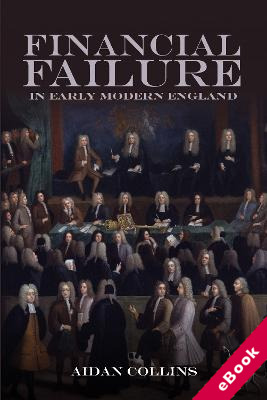
The device(s) you use to access the eBook content must be authorized with an Adobe ID before you download the product otherwise it will fail to register correctly.
For further information see https://www.wildy.com/ebook-formats
Once the order is confirmed an automated e-mail will be sent to you to allow you to download the eBook.
All eBooks are supplied firm sale and cannot be returned. If you believe there is a fault with your eBook then contact us on ebooks@wildy.com and we will help in resolving the issue. This does not affect your statutory rights.
Analyses how bankruptcy was litigated within the court to gain a more nuanced understanding of early modern bankruptcy.
This book examines cases involving bankruptcy brought before the court of Chancery - a court of equity which dealt with civil disputes - between 1674 and 1750. It uncovers the numerous meanings attached to financial failure in early modern England. In its simplest sense, personal financial failure occurred when an individual defaulted on their debts. Because they had not fulfilled their responsibilities and behaved in a trustworthy and credible manner, bankrupt individuals were seen to be immoral. And yet bankruptcy was linked to wider notions of credibility, trustworthiness, and morality. Financial failure was described and debated not just in economic terms, but came to rely on a combination of social, community, and religious values.
Bankruptcy cases involved an interconnected network of indebtedness, often including relatives, neighbours, and traders from the local community. As such, conceptions of failure implicated individuals beyond just the bankrupt. As people began to look back and appraise the actions and words of those involved in trade, a far wider network of creditors, debtors, and middlemen were blamed for the knock-on effect of an individual failure. Ultimately, the book investigates the negative aspects of early modern trade networks and the active role of the court when such networks broke down, providing unique access to contemporary understandings of what was considered right and wrong, honourable and deceitful, and criminal and compassionate within the moral landscape of debt recovery during the seventeenth and eighteenth centuries.